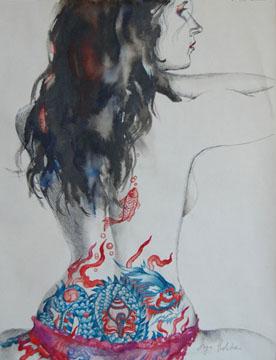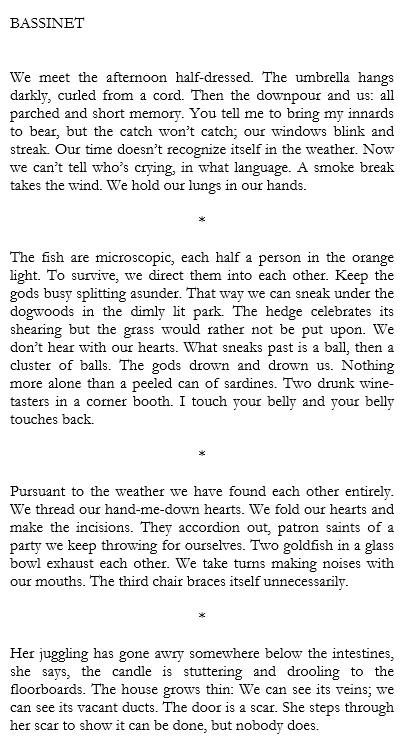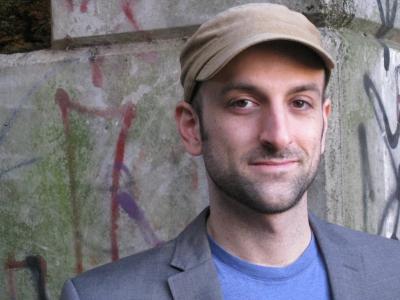I was arguing with my friend Isaac about prose poems, about the line between poetry and prose, and if we should care. This was several years ago. We were in my kitchen, and everyone else at the party was drunk.
He pulled out Robert Hass’s wonderful prose poem, “A Story about the Body,” and launched his defense of its poemhood: It’s rhythmical, lyrical, yes narrative too, but intensely compressed. The narrative culminates in an image: “It looked to be full of rose petals, but he found when he picked it up that the rose petals were on top; the rest of the bowl – she must have swept the corners of her studio – was full of dead bees.”
Robert Pinsky refers to that last image as a “symbolic power” and rhapsodizes on how Hass avoids the showiness, rampant in contemporary American poetry, that calls attention to the poet and away from the poem. In the tradition of Baudelaire, but more complicated in its articulation of love, Pinsky says.
Yes, but (I said to Isaac) isn’t it important that Hass literally interrupts his final image to give us some exposition? He’s describing the bowl, and we’re in the moment of discovering it, and then he stops to give us some backstory about where the bees came from. Isn’t he privileging the needs of the narrative over the needs of the language? If the tension between prose and poetry is the tension between story and image, clearly story is winning here.
But Isaac was not convinced. After all, the piece does end on the image of the dead bees, and the exposition just serves to intensify the power of that image. Then again, using exposition to raise the stakes of the scene at hand is fiction writing 101.
The argument moved on to intention, and if a poem composed accidentally by barnacles on a ship’s hull is a poem. Once some poet comes along and names it such, it absolutely is, we agreed, but before then? Our drinking had caught up with our friends’.
Was that argument worth something? It’s stuck with me for years, and it’s made me love Hass’s prose poem more, and teach it often. And I think about how the form can animate that tension between image and narrative when I write my own prose poems, including “Bassinet.”
In my poem, the loss that underlies it can’t be viewed directly. I couldn’t tell that story in a conventional narrative, like Hass did. I was too deep inside it. The images serve, I hope, to create the story, or enough of a story to whet the poem.
I think about that Hass poem and how bad it would be without that final image, how that image isn’t just decoration but essential to the narrative. I try to build whole poems out of only the essential material.
A postscript to the poem: Our bassinet stayed empty for a long time, but now it’s full.
Inga Poslitur studied Fine Arts for six years in Art school, back in Russia. During that time she learned basics in painting, drawing, sculpture and printmaking. After graduation she was accepted at the Academy of Applied Arts in Moscow in 1986 and studied there for four more years. In 1992 she enrolled and in 1996 she graduated from the Fashion Institute of Technology, NY, with major in General Illustration.
On a regular basis Inga goes to museums to sketch and takes notes for potential projects. Her other passion is traveling. It enhances her awareness of colors, shapes and patterns. She sharpened her drawing skills by copying originals of old masters at the Morgan Library, taking classes at the Academy of Arts and Art Students League.





